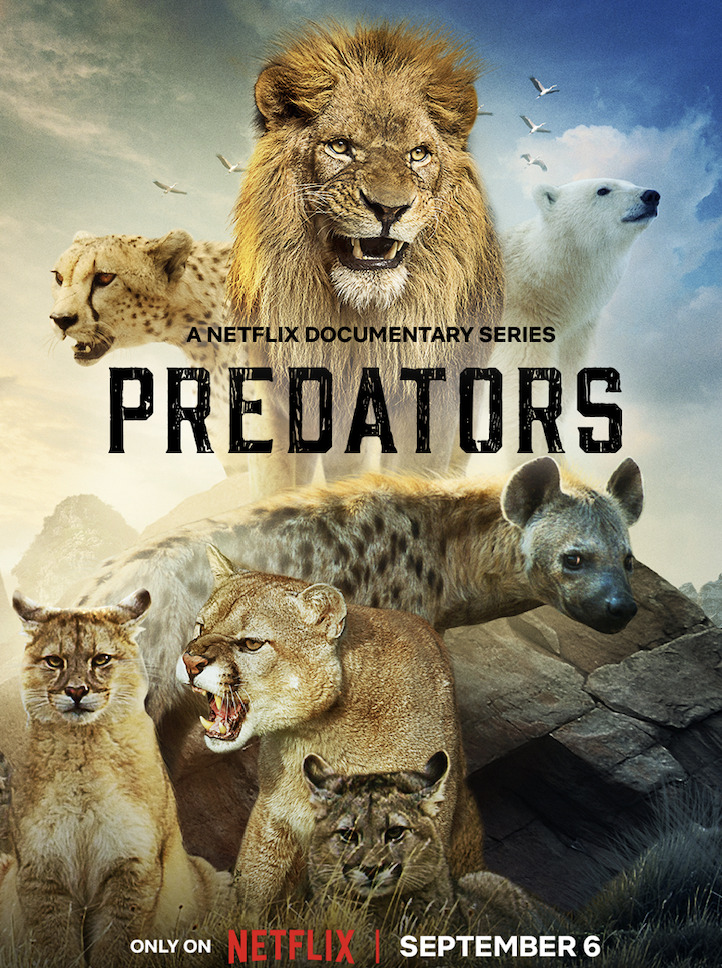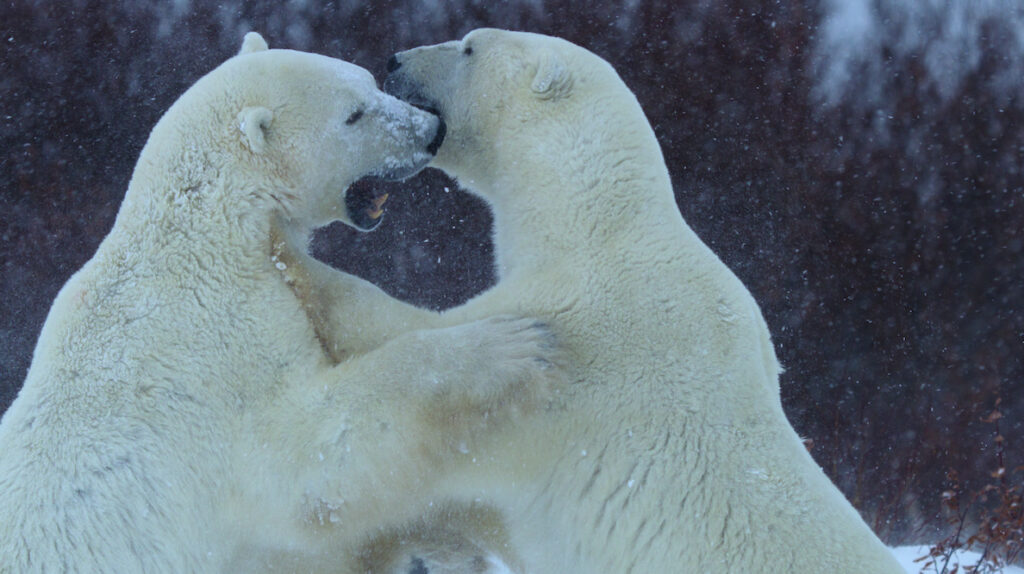
Not to be confused with Nimród Antal’s 2010 sci-fi thriller with the same name, Predators is a superbly presented nature documentary that focuses on the challenges faced by animal populations on three continents.
Engagingly narrated by actor Tom Hardy, five episodes of the series recently debuted on Netflix, which co-produced it with Sky Productions. The real stars of this impressive narrative are the “apex predators” commonly known as cheetahs, lions, polar bears, pumas, and wild dogs—all captured in glorious footage of their struggle for survival in far-flung locales such as Botswana, Canada, Patagonia, Tanzania, and Zimbabwe. A sixth episode, about brown bears in Russia, is reportedly in the offing.
In today’s world whose human predators are only now awakening to the environmental impact of climate change, Predators is a much-needed wake-up call. Animal populations, too, have long been dealing with out-of-control brush fires, searing droughts, and catastrophic deluges—and often with a sense of community and cooperation lacking in their human counterparts.
 @Predators, Netflix
@Predators, Netflix
On the surface, this “survival of the fittest” trope usually suggests a harshly competitive “dog-eat-dog” world. And, truth be told, there is bloodshed aplenty in these five Predator episodes. But, much to his credit, the director bids us consider that even apex predators do not achieve their goals without mutual creature-feeling and cooperative strategies.
This is particularly evident in the first episode about cheetahs on the Serengeti in Africa, where two fraternally minded cats, named Luka and Kova, are pictured as “bonded buddies” who have each other’s back in the grueling survival struggles with wildebeests, lions, and zebras thrown together in a hostile environment ліхтар акумуляторний світлодіодний. The two seem to have an instinct for bonding together to fight their daily turf wars—or is this just the director’s opinion, who after all, has the ultimate power to manage the narrative by artfully juxtaposing the footage?
 @Predators, Netflix
@Predators, Netflix
That said, Predators makes its point by focusing often on the warmer, fuzzier side or things, if such adjectives are appropriate to thundering herds of wildebeests and gazelles being pursued by speedier cheetahs рукавиці без пальців. Viewers of these never-boring-for-an-instant episodes are treated to a wide variety of camera shots—from giddying aerial panoramas to dangerously up-close portraits of the predators seizing and devouring their prey. Even the flies that are drawn to the carcasses have their moment in the sun multitool. How these shots were captured without putting the camera crew in peril is a mystery, unless the director deployed an armada of robo-cameras on drones.
In addition to the beasts who populate these dramatic episodes, natural landscapes are portrayed in all their sublime and terrifying beauty, especially the ice-capped peaks of Patagonia and the ice-edged shores of Hudson’s Bay in Canada купить тактические перчатки. These scenes provide a melancholic backdrop to the whole enterprise, given the prevailing notion that even ice, majestic and immutable, is quickly becoming another victim of global warming кемпинговый фонарь. Though the voice of the narrator is the only human device in Predators, it is the noticeable absence of human players in the episodes that speaks loudly about the clear and present danger that human activity has wrought upon the world of apex predators.
Rating: A
 @Predators, Netflix
@Predators, Netflix
Check out more of Edward’s articles.
Here’s the trailer of the film.

